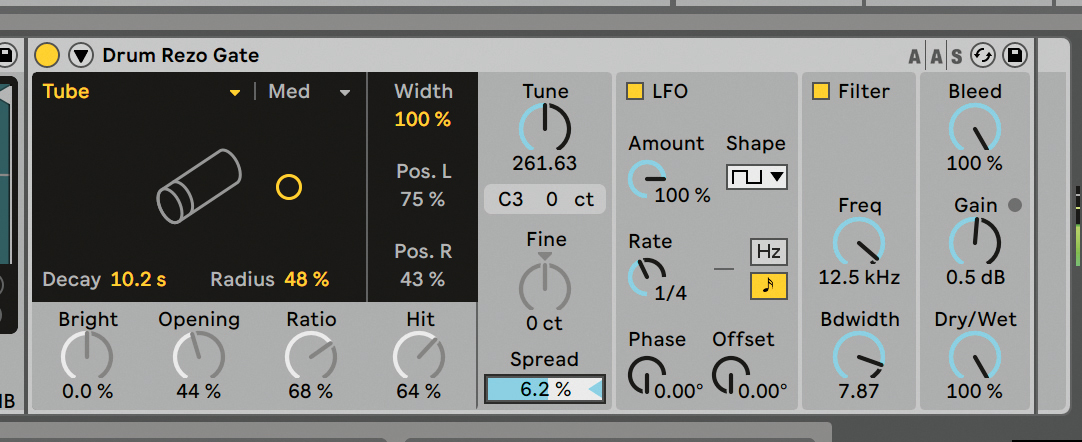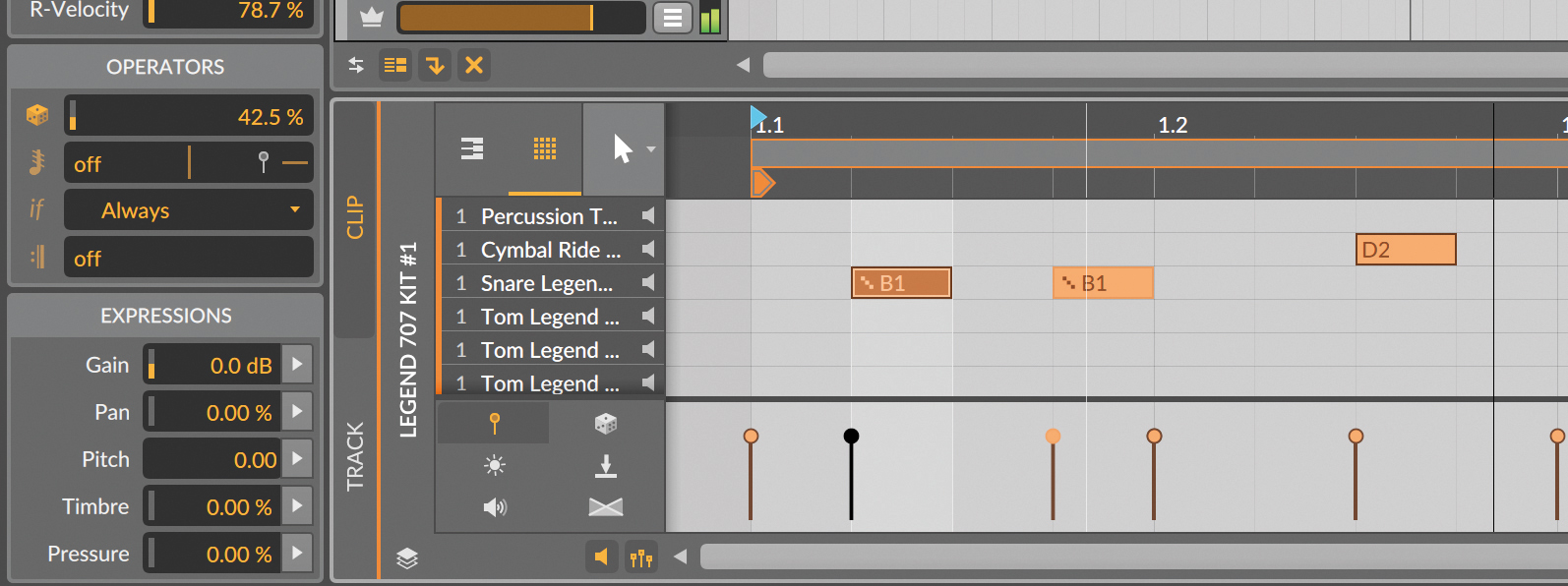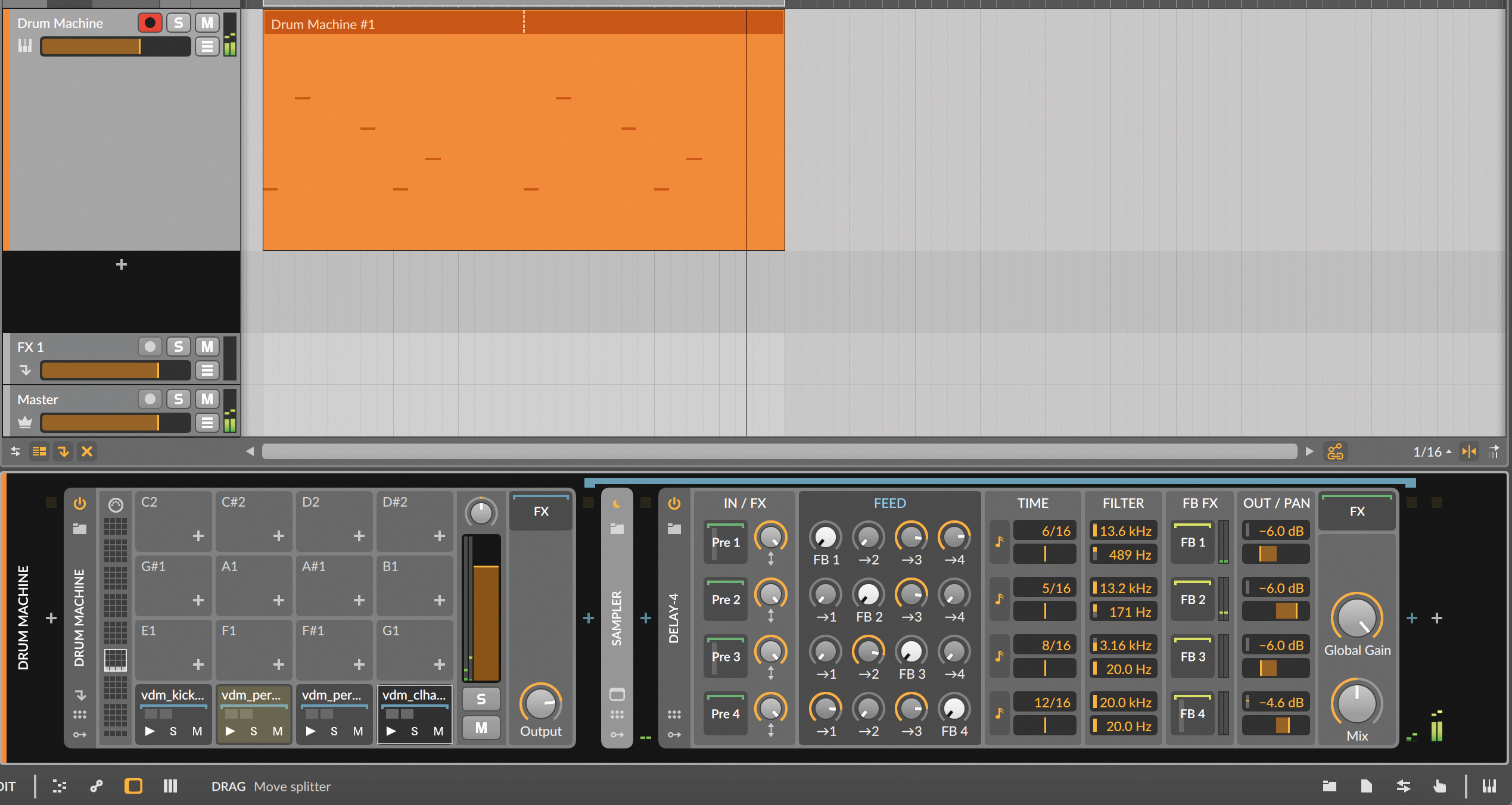5 futuristic drum tricks to bring your beats into 2023
Put a creative and contemporary spin on tried-and-tested rhythms
Kick, snare, clap and hi-hat - the basic elements of electronic drum production have, on the surface, changed little since the dawn of dance music in the 1980s.
But technology has come on in leaps and bounds since then. How can we take these tried-and-tested rhythms and give them a modern, creative spin? You’d be forgiven for assuming that creating a cutting-edge rhythm track means investing in the latest tools.
Before we get stuck though, let’s make one thing clear: this is absolutely not the case. Next-gen plugins and bleeding-edge beatmakers are great, and highly worth investigating if they pique your interest. But there are often workarounds and techniques that let users achieve similar ideas for free with the tools in your DAW.
If you look back through our artist interviews or video features, it becomes clear how many pro producers are happy to use relatively conventional tools for drum production. Whether that’s Ableton’s Drum Racks, Logic’s Drum Kit Designer, NI Maschine or simply by arranging audio directly on a DAW’s timeline.
The truth is that all of these approaches are powerful, particularly compared to the limitations of classic hardware. As we explore on this page, there are plenty of techniques you can employ in order to take an adventurous approach to drum design within your DAW’s base toolkit.
1. Tuning tricks

The tonal nature of 808 and 909 drums means they can be used as melodic or tuned elements. Using the TR-808’s toms as a simple bass pattern over a kick is a simple trick. Separating these elements to different channels allows each to be processed differently.
Pitched-down toms can generate enough sub energy to become a forceful bass element – a familiar trademark of harder styles of house and techno. An 808 tom pitched down six semitones in a sampler works well around a mid-heavy 909 kick.
Want all the hottest music and gear news, reviews, deals, features and more, direct to your inbox? Sign up here.
2. Resonators, ring mods and more

Your DAW likely has plenty of tools that can make a dry drum hit sound ‘futuristic’. Tools such as resonators, comb filters and ring modulators are great for this. Each can apply tunable metallic or unnatural qualities that can add a lot of personality to kicks, snares or percussion.
Ableton’s Corpus effect is particularly good for this. It’s a resonator effect that allows users to process sounds using physical modelling. Try using it to add a tuned sub under a kick, or rattling, spring reverb-like character to snares.
3. Gates and filters

The traditional way of making a beat is to sequence individual hits to create a rhythm, but try using a gate or filter plugin to carve a rhythmic pattern out of a full audio loop. The key is to start with a long, textural sound source – a white noise loop, heavily pitched down cymbal or even bounced out reverb tail are good options.
Use a noise gate or low-pass filter to create abrupt, percussive start/stop rhythms, controlled by a sequencer or LFO, or simply by drawing automation on your DAW timeline.
4. Delayed rhythms

Delays are inherently percussive effects, in that the spacing of repeats they create always creates a rhythm. As well as adding character or space to drum hits, delay plugins can be used as effective rhythmic sequencers in their own right.
Create a simple pattern of just a few drum hits, each placed on its own track with a delay effect after each. Experiment with different timing, feedback and dry/wet settings to create a groove of interweaving delay lines. Be experimental: pitch shifting delay works great here, as does modulating the timing of one or more effects over time, to create rhythmic shifts in your track.
5. Probability sequencer

The ability to set a probability level for a MIDI event is increasingly common in DAWs, and can be great for creating unpredictable variations, albeit ones that adhere to your own design. Try enhancing a repetitive drum pattern with probability-based ghost hits.
Create a basic beat with the core elements’ probability at 100%, then pepper spaces between main hits with incidental hits, each at a probability of 50% or less. You thereby create a pattern that changes with each cycle, whilst keeping a recognisable core groove.
Bonus tip...

How do we strike a balance between familiar drum formats and ear-catching experimentation? One approach is to start with an entirely conventional drum groove, and then add interest and subvert expectations.
Creating a ‘standard’ house groove is pretty basic. Start with a pack of TR-909 sounds - if you don't have these, you can find something similar over at SampleRadar. Create a two-bar MIDI clip and place a kick on every beat. Now add claps and/or snares on beats two and four and an open hi-hat on each offbeat. Use a few closed hats or percussion hits for extra variety between these elements.
Now you should have a fairly conventional house drum groove. Applying a slight swing (8-12%) and a little variation in velocity levels will make it feel much less rigid. Now let’s see how we can add interest with a few simple sequencing ideas.
Firstly, try moving one of the kicks in your second bar slightly for a bit of syncopation. Shifting the kick on either beat 2.2 or 2.4 back or forward on the grid by one 16th will create a little variation without disrupting the overall feel of the beat. Similarly, try removing the first kick from bar two entirely and using an alternative element in its place, such as an FX hit or pitched-down found sound.

Next we can try changing the pitch, shape and timbre of the sounds themselves. Try pitching the open hats down 12-24 semitones, for a darker sound. Filtering/EQ and transient or envelope shaping may be needed to rein the sound in a little.
Similarly we can change the feel of this basic groove without losing its form by laying more unexpected sounds in with the basic drum machine ones. We could swap some of our snares or claps for a dubby synth stab. Or slice a vocal loop and use single syllable hits in place of ghost snares or percussive FX.
These are all fairly basic tricks, but ones that let us rapidly go from something boringly predictable to a beat with its own unique personality.


I'm the Managing Editor of Music Technology at MusicRadar and former Editor-in-Chief of Future Music, Computer Music and Electronic Musician. I've been messing around with music tech in various forms for over two decades. I've also spent the last 10 years forgetting how to play guitar. Find me in the chillout room at raves complaining that it's past my bedtime.